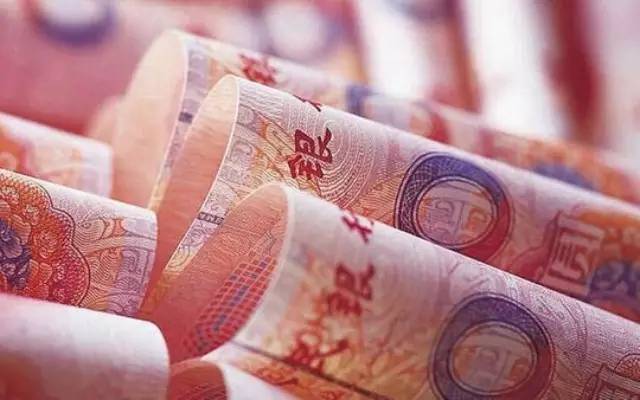


By July 27, local governments in China had issued 3.77 trillion yuan ($565.4 billion) in municipal bonds since the beginning of 2016, approaching last year's 3.8 trillion-yuan volume, Economic Information Daily reported on July 28. The pace of sales remains hot in July after the growth rate bump in the first and second quarters.
The scale of newly-issued bonds reached 963.1 billion yuan, accounting for 25.56 percent of the total volume. According to the deficit size approved by China's top legislature, the National People’s Congress (NPC), the scale of new local governments bonds for 2016 is 1.18 trillion yuan. So far, more than 80 percent of the annual index has been met.
Around 2.81 trillion yuan of bonds have been issued under the bond-for-debt swap program, exceeding the annual volume of local debt due by the end of this year. The debt, according to the NPC report, totals 2.8 trillion yuan. It is therefore clear that undue bond swaps started early this year.
A debt swap involves the exchange of a new bond issue for similar outstanding debt. The program has been launched to address the problem of local government debt.
Statistics show that provinces including Jiangsu, Shandong and Zhejiang have issued more than 180 billion yuan worth of bonds in the first half of the year, with Jiangsu province topping the chart with its 241.66-billion-yuan figure.
Bond issuance of 16 provinces and municipalities has by now surpassed the annual amount in 2015. Guangdong province and Tianjin municipality increased the scale by 48.1 billion yuan and 24.3 billion yuan respectively.
Industry insiders believe the increasing bond issuance pace can be attributed to payment pressure on local treasuries and the issuance plans of local government.
Jiang Zhen, associate fellow at the National Academy of Social Science, told Economic Information Daily that based on the first and second quarters of 2016, the distribution of local government bonds--as an important tool of proactive fiscal policy--indicates China’s resolution to reverse its sliding economic growth.
China has completed the value-added tax reform. All business taxes in China were replaced with value-added taxes. In the short term, local governments need to borrow to fill the gap caused by tax reduction, Jiang added. Jiang noted that the high percentage of replacement bonds will improve the debt maturity structure and ease the government’s pressure on debt interests.
CCXI senior analyst Fu Xiaodong pointed out that the increase in local bonds has also boosted fiscal deposits.
“Though the economy has shown a rebounding tendency lately, the foundation for steady economic recovery is not yet firm in the long term. Overcapacity and high leverage still need to be addressed,” Fu explained.
According to Xu Hanfei, an analyst with Guotai Junan Securities, Beijing, Shanghai and four other regions lag behind in bond issuance. Xu urged them to expedite their local debt swap progress.
However, Jiang believes that in the second half of the year, the Chinese government should maintain the flexibility of its debt policies and adjust the scale of local debt in accordance with the macro-economic situation.
Deputy Director-General Wang Kebing of the Budget Department of the Ministry of Finance said at a press conference in June that by the end of 2015, the central government debts "subject to budgetary management" totaled 10.66 trillion yuan, while such debts of local governments were 16 trillion yuan. Combined, they account for 39.4 percent of China's GDP, Wang said.
“That still leaves some room for governmental debt in general,” he added.
 Who Will Fit The Chinese Roles In Game Of Thrones?
Who Will Fit The Chinese Roles In Game Of Thrones? China's Hubei Shennongjia added to World Heritage List
China's Hubei Shennongjia added to World Heritage List "Straddling bus" starts production in east China
"Straddling bus" starts production in east China Girl goes viral for finger-long toes
Girl goes viral for finger-long toes Five made-in-China hi-tech breakthroughs
Five made-in-China hi-tech breakthroughs HK-Zhuhai-Macao Bridge to open to traffic
HK-Zhuhai-Macao Bridge to open to traffic China opens its first combined transport service to Nepal
China opens its first combined transport service to Nepal Students take stylish bikini graduations photos
Students take stylish bikini graduations photos Charming dancing students pose for graduation photos
Charming dancing students pose for graduation photos Top 10 livable Chinese cities
Top 10 livable Chinese cities Top 20 hottest women in the world in 2014
Top 20 hottest women in the world in 2014 Top 10 hardest languages to learn
Top 10 hardest languages to learn China’s Top 10 Unique Bridges, Highways and Roads
China’s Top 10 Unique Bridges, Highways and Roads China condemns slur on Chinese national’s passport in Vietnam
China condemns slur on Chinese national’s passport in Vietnam 1976 Tangshan quake orphan recalls psychological aid after Wenchuan disaster
1976 Tangshan quake orphan recalls psychological aid after Wenchuan disaster The Philippines risks 'becoming a big US military base' amid sea tensions: observer
The Philippines risks 'becoming a big US military base' amid sea tensions: observer IOC Russia Rio ban a real balancing act
IOC Russia Rio ban a real balancing actDay|Week